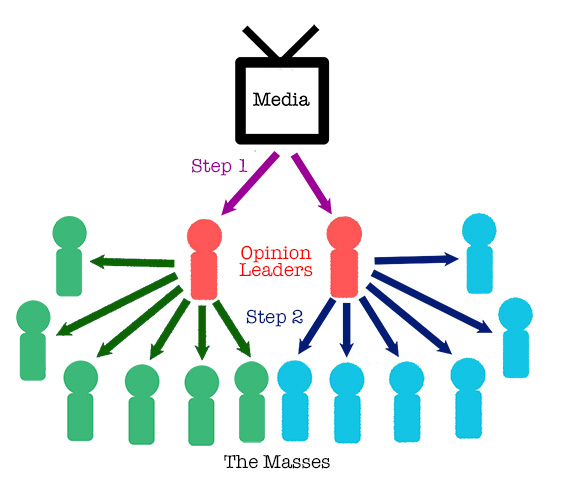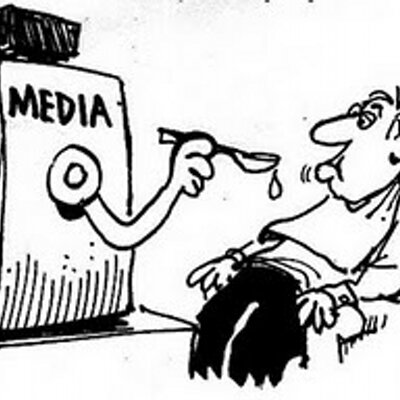- After World War 2, the use of mass media increased. In the 1940’s and 50’s, mainstream media took off. TV’s were widely used, this kick started research into the way in which audiences are influenced.
- The ‘Hypodermic Needle Theory’ = The passive consumption of audiences. When audiences are being ‘injected’ with media, they are ‘knocked into submission’ and go along with the messages the media promote.
- Harold Laswell = Wrote a novel called ‘Propaganda Technique in The World War’ in 1927 following his own experience serving in WWI. He later created a linear model of communication. Theory work around the effect of media communication and consumption trace back to him.
- ‘Two Step Flow of Communication’ = Encapsulates the idea that media messages are not directly ‘injected’ into the mass audience, they are ‘injected’ into the ‘important’ people, or ‘opinion leaders’, who then promote this message to the masses.
- Shannon and Weaver = 1949, Adapted Laswell’s theory and created the ‘Transmission model of Communication‘
- Paul Lazarfeld = Believed that the linear communication model was too simple and did not factor in the different ways in which media messages could be communicated.
- Uses and Gratifications (Active Selection) – Elihu Katz posed the question of ‘what does media do to people?’. Research into this started with McQuail and Blumler.

Psychographic Profiles (Used to distinguish the different types of audiences and product customers):
The Explorer – motivated by the need for discovery.
The Resigned– motivated by survival needs.
The Aspirer – motivated by esteem/status needs.
The Mainstreamer – motivated by belonging needs.
The Reformer – motivated by enlightenment needs.
The Succeeder – motivated by the need for control.
The Struggler – motivated by escapism needs.



